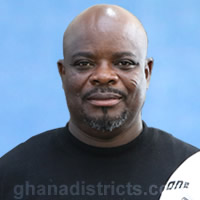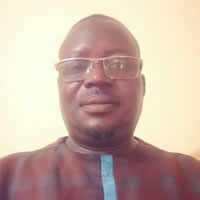Community Needs and Aspirations
The under mentioned community needs and aspirations were arrived at during the harmonization under the District Poverty Profiling and Mapping (2004 -2005) and the Area Councils community Action Plans of 2005 -2006. These two programmes which are participatory record only what the communities and Town/ Area Councils state about their existing situation and what they believe could be of the solution, of cause the technical definitions were arrived at by the District planning and Co-ordinating (DPCU):
1. Development of agriculture
2. Employment opportunities
3. Improved access to farming inputs
4. Credit schemes
5. Improvement in social infrastructure
6. Improvement to access to irrigation facilities and infrastructure
7. Improvement in access to portable water and sanitation facilities
8. Improvement in access to information
9. Improvement in access to electricity
10. Improvement in access to market structure
11. Improvement in access to health delivery services and the Mutual Health Insurance
12. Improvement in road network and transportation
Elaborated in the next chapter are the key development problems/ issues in the district.
Vulnerability
The Vulnerable and the Excluded
The Vulnerable and the excluded consist of people with disabilities, children and women. The group forms a large portion of the District population. Their protection should therefore form the core responsibility of the Assembly.
People with Disabilities (PWD)
A large number of physically and mentally challenged persons live in various parts of the district. It would be noted that out of the large number of PWD in the district, the blind are more than the others. This can be attributed to the fact that there is prevalence of tsetse flies along the Kamba River, a tributary of the Black Volta, which causes onchocerciasis. This situation is more with tlie elderly at Baazing, Boo, Naapal and Toto.
From 1999 to 2002 the District Assembly through its Poverty Alleviation Fund and other NGOs, especially Action on Disability and Development (ADD) and the Catholic Church have assisted some of the People With Disabilities with funds and logistics to undertake income-generating activities. For example, pigs rearing dry season gardening, pito brewing. rearing is at Boo.The gardens are located at Boo and Eremon, while pig rearing is at Boo
The undelisted activities are on-going with the view of improving their social status and income levels;-
Registration of PWD and the type of work they can do;
Registration of children with disabilities who are being referred to special schools;
Registration of parents of children with disabilities to assist in the training of the children. And acquisition of a plot for the building of a Resource Centre.
A significant number of people with disabilities live in various parts of the district. Below is the table showing the number of people with disabilities in the district.
From the table the blind forms the majority of the People with Disabilities in the District. This can be attributed to the prevalence of tsetse flies along the Kamba River, a tributary of the Black Volta, that cause onchocerciasis. The most affected parts in the district are Baazing, Boo, Naapal and Toto.
The District in the desire to live up to its responsibilities has been able to give credit facilities to Peoples with Disabilities under the poverty alleviation fund. A plot has also been acquired to build a resource and rehabilitation centers for people with disabilities. A number of people with disabilities have also been supported in the area of education by the District Assembly. The Assembly also assisted the Disabled in the Boo Community in dry season gardening.
Despite these achievements, there is still a lot to be done to alleviate the plight of the Disabled. For instance the Disabled are not fully integrated into the decision making process right from the family level to the district level. They therefore need to have a representative especially, in the District Assembly
It will also be a good idea if a resource and rehabilitation centre is built for the Disabled in the District.
Women and Children
A situational analysis on women and children in the Lawra Municipality District reveals that they are highly disadvantaged economically, socio-culturally and politically. Economically, majority of women in the district are among the poorest of the poor. Most women do not own any property and they do not earn any meaningful income or their own. Socio-culturally, women are to be seen and not heard; the roan is the decision maker. In the rural areas a considerable number of children of school going age, especially the girl child, are not in school but found rearing cattle, farming, and providing child labour. Children in the urban areas are also involved in petty trading to supplement family incomes.
Polilicallv and administratively, women arc disadvaniaged. Very few women are involved in politics or occupy higher administrative positions. In sum, women and children in the district are marginalized and for anv meaningful development in the district there needs to be a transformation of the state of the woman and the child. The Gender Desk and Girl-Child Desk have been created in the District, while Social Welfare CHRAJ and WAJU are also in the forefront to promote gender sensitivity and empowerment. Donors and NGOs such as D1SCAP, Action Aid, DSDA II, World Food Programme. PRONET/OXFAM and CRS are supporting this worthy course.
Advocacy
In collaboration with the Catholic Church, Ghana Education Service and District Assembly, public fora were held at the various Town/Area Councils against child abuse, betrothal and eradication of conventions and traditions which are anti-social. The Children’s Act of 1998, Act 560 were distributed to the second cycle institutions and the traditional councils after participatory discussions were held. The key development problem identified in this sub-sector is declining quality of life of the vulnerable and the excluded.
Women in the District are marginalized. From 2002 – 2005 (10) cases have been recorded by the Department of Social Welfare. Out of this figure fifty nine (59) of the complainants are women. Children are mostly associated with women and can therefore conclude that children could not escape the predicaments their mothers undergo. The District Assembly is working to change the trend by empowering women through participation in decision making and providing them with credit facilities. The Assembly is also supporting the construction of a social centre for widows at Kokoligu in collaboration with Action Aid and shelter Network (NGO)
SKILLS AND ENTREPRENEURIAL DEVELOPMENT FOR THE YOUTH.
Support for Youth Training
The Lawra Municipality Assembly in consultation with the GES and collaboration with NGOs continues to sponsor boys and girls in various vocations at Issa Youth. It also supported learning centres under the CBRDP micro credit facility for learning centres.
Currently, there are five (5) private vocational and technical institutes in the district. These are:
1. Nandom Vocation School
2. St. Anne’s Vocational Training Institute
3. Tanchara Vocational Training Institute
4. Bishop Oscar Morim Voc. Training Institute, Ko, and
5. Guo Voc. Centre.
The Lawra Municipal is expected to complete two abandoned projects at the Nandom vocational school and St. Anne’s vocational Institute both at Nandom.
Date Created : 11/15/2017 7:08:13 AM




